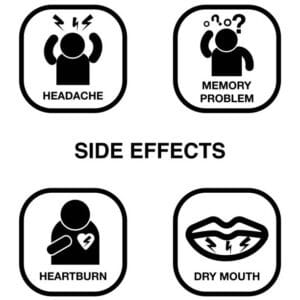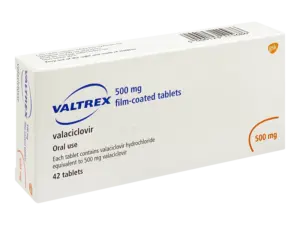Breaking News: 2025 marks a revolutionary year in hair loss treatment with groundbreaking discoveries from UCLA, UVA, and leading pharmaceutical companies. New therapies are showing unprecedented results in clinical trials, offering real hope for millions suffering from androgenetic alopecia and other forms of hair loss.
🔬 Revolutionary Breakthroughs in Hair Loss Research 2025
The hair loss treatment landscape is experiencing its most significant transformation in decades. Recent clinical trials have unveiled multiple game-changing therapies that target the biological mechanisms of hair loss at the cellular level, moving beyond traditional hormone-based treatments.
Market Value (2022)
Projected by 2030
History
💊 PP405: The UCLA Game-Changer
Researchers at UCLA have developed PP405, a small molecule that awakens dormant hair follicles by targeting hair follicle stem cells. What makes this breakthrough particularly exciting is its unique mechanism of action—it doesn’t just slow hair loss, it actually promotes regeneration.
🎯 Phase 2a Clinical Trial Results
- 31% of men with advanced hair loss showed over 20% increase in hair density at 8 weeks
- Zero systemic absorption – topical application only
- Produces terminal hair (full-thickness) rather than vellus (peach fuzz)
- $16.4 million funding from Google Ventures for further development
- Phase 3 trials scheduled for 2026
🧬 ET-02: Unprecedented Phase 1 Results
Eirion Therapeutics’ ET-02 is rewriting the rulebook for hair loss treatment. Unlike conventional therapies that stimulate follicles, ET-02 corrects the underlying stem cell defects that cause hair follicles to shut down.
*ET-02 achieved in 1 month what minoxidil takes 4 months to accomplish
🔍 University of Virginia Stem Cell Discovery
UVA researchers have identified a previously overlooked population of stem cells in the upper and middle sections of hair follicles that are essential for hair growth. The groundbreaking finding: these stem cells remain present even in bald scalp areas, opening new possibilities for reactivation therapies.
📊 Current Treatment Landscape 2025
| Treatment | Usage Rate | Mechanism | Administration |
|---|---|---|---|
| Finasteride 1mg | 66.4% | DHT blocker | Oral |
| Minoxidil 5% Foam | 56.8% | Follicle stimulation | Topical |
| Topical Finasteride | 14.3% | DHT blocker | Topical |
| Minoxidil 5% Solution | 14.3% | Follicle stimulation | Topical |
| Oral Minoxidil | 10.2% | Systemic stimulation | Oral |
🚀 Emerging Technologies in 2025
📈 Clinical Trials Timeline 2025-2026
PP405 Phase 2a Results
Pelage Pharmaceuticals reports positive safety and efficacy data. Preparation for Phase 3 trials underway with expanded patient enrollment.
PP405 Phase 3 Launch
Large-scale trials to begin evaluating PP405 efficacy across diverse patient populations with various degrees of androgenetic alopecia.
Multiple JAK Inhibitor Studies
Ritlecitinib (Pfizer), Deuruxolitinib, and Dupilumab trials actively enrolling patients aged 6-55 for alopecia areata treatment.
Stem Cell Research Programs
Over 4,900 clinical trials exploring stem cell therapy effectiveness for hair regeneration, with promising early-stage results across multiple institutions.
🌍 Market Dynamics and Patient Demographics
| Hair Loss Type | Prevalence | Primary Treatment |
|---|---|---|
| Androgenetic Alopecia (Male) | 50%+ by age 50 | Finasteride, Minoxidil, PP405 (trial) |
| Androgenetic Alopecia (Female) | 25% by age 50 | Minoxidil, Spironolactone |
| Alopecia Areata | 2% population | JAK inhibitors, Corticosteroids |
| Telogen Effluvium | Variable | Address underlying cause |
| Stress-Related Hair Loss | 11x higher in stressed individuals | Lifestyle modification, PRP |
💡 Key Takeaways for Patients
What This Means for You
- Hope on the Horizon: Multiple breakthrough therapies entering late-stage trials with unprecedented efficacy rates
- Personalized Medicine: 2025 treatments target specific biological pathways, not just symptoms
- Regeneration vs. Prevention: New therapies aim to regrow hair, not just slow loss
- Safety First: Topical formulations like PP405 show no systemic absorption, reducing side effect risks
- Timeline: FDA approvals expected 2026-2027 for leading candidates
🔬 The Science Behind the Breakthrough
Traditional hair loss treatments like minoxidil and finasteride work by stimulating follicles or blocking hormones. The 2025 generation of therapies takes a fundamentally different approach by targeting the hair follicle stem cell biology directly. This paradigm shift means potentially reversing hair loss at its source rather than managing symptoms.
PP405, for instance, isolates and applies to a specific protein in follicle stem cells that keeps them dormant. By reactivating these cells, the therapy awakens long-sleeping but undamaged follicles. Similarly, ET-02 corrects defects in stem cell function, restoring normal hair follicle operation.
📱 Staying Informed
With rapid developments in hair loss research, staying updated is crucial. Multiple phase 2 and 3 trials are ongoing, and results are being published regularly. The next 12-24 months will be pivotal in determining which therapies advance to FDA approval.
Scientific Sources & References
- UCLA Newsroom: PP405 Molecule Breakthrough Treatment
- UVA Health: Discovery Reveals Potential Key to Reversing Hair Loss
- Drug Topics: Hair Loss Therapy Shows Potential for Regeneration
- Dermatology Times: PP405 Demonstrates Efficacy in Phase 2a Trial
- Medihair: Hair Loss Statistics 2025
- Dermatology Times: The Unprecedented Phase 1 Results of ET-02
- NAAF: Clinical Trials & Research Studies




